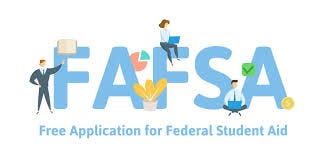FAFSA 2025-2026: What You Need to Know Before December 1
"It’s that time of year again—the FAFSA for the 2025-2026 academic year opens on December 1, 2024!"
The Free Application for Federal Student Aid (FAFSA) is the gateway to billions of dollars in federal aid for college students, and for the 2025-2026 school year, the application will open on December 1, 2024. This delayed start marks a shift from the usual October 1 opening, part of changes aimed at simplifying the process and making it more accessible. Whether you’re a first-time applicant or renewing your FAFSA, here’s everything you need to know to get a head start.
What Is the FAFSA?
The FAFSA determines eligibility for federal student aid, including:
Grants (like the Pell Grant, which doesn’t need to be repaid)
Loans (both subsidized and unsubsidized)
Work-study programs
Some state and institutional aid programs
Filing the FAFSA is crucial even if you think you might not qualify for federal aid—many colleges and scholarship programs use it as part of their financial aid decisions.
Key Changes for the 2025-2026 FAFSA
Several updates are rolling out for this year’s FAFSA:
Simplified Form: The application is shorter, with fewer questions, making it easier for families to complete.
New Income-Driven Approach: The FAFSA will now calculate the Student Aid Index (SAI) instead of the Expected Family Contribution (EFC), providing a more accurate reflection of financial need.
Expanded Eligibility: More students may qualify for Pell Grants, particularly those from middle-income families, due to updated income thresholds.
Streamlined IRS Integration: The IRS Data Retrieval Tool has been enhanced, allowing for seamless transfer of tax information into the FAFSA.
FAFSA Timeline and Deadlines
Opening Date: December 1, 2024
Federal Deadline: June 30, 2026 (but don’t wait this long!)
State and Institutional Deadlines: Vary, with many being much earlier. Check with your state and college for their specific deadlines.
Pro Tip: Submit your FAFSA as soon as possible after December 1 to maximize your financial aid eligibility. Some aid is distributed on a first-come, first-served basis.
What You’ll Need to Complete the FAFSA
Before you begin, gather these documents and information:
FSA ID: Both the student and one parent (if dependent) need an FSA ID to sign the form electronically.
Social Security Number (or Alien Registration Number if you’re not a U.S. citizen).
2023 Tax Information: Use tax returns from two years prior.
Bank Statements and Investment Records: To report current financial assets.
List of Schools: Add all the colleges you’re considering, even if you haven’t applied yet.
How to Apply
Create or Log In to Your FSA ID
Visit studentaid.gov to set up your FSA ID if you don’t already have one.Complete the FAFSA
Starting December 1, log in and fill out the FAFSA online. Follow the instructions carefully, and use the IRS Data Retrieval Tool to import tax information.Review and Submit
Double-check your application before submitting. Errors can delay processing and financial aid decisions.Receive Your SAR (Student Aid Report)
After submitting, you’ll get a summary of your FAFSA, which includes your SAI and eligibility for aid.
Common FAFSA Mistakes to Avoid
Missing the Deadline: Some aid runs out early. Submit your FAFSA as soon as possible.
Skipping Questions: Answer all applicable questions to avoid processing delays.
Using the Wrong Tax Year: Make sure to use 2023 tax information for the 2025-2026 FAFSA.
Not Signing the Form: Both student and parent (if dependent) must sign electronically.
Why File the FAFSA?
Even if you think you won’t qualify for need-based aid, filing the FAFSA is still worth it. Many merit-based scholarships and state aid programs require a completed FAFSA. Plus, it opens the door to low-interest federal loans and work-study opportunities that can reduce the financial burden of college.
Final Thoughts
The FAFSA is a critical step in your college journey, and the 2025-2026 application season presents an opportunity to take advantage of updated, more accessible features. Mark December 1, 2024, on your calendar, and start preparing your documents now to ensure a smooth filing process.
For more FAFSA tips and updates, subscribe to my Substack for regular posts on navigating college and scholarships!




